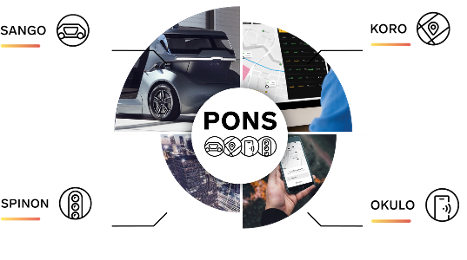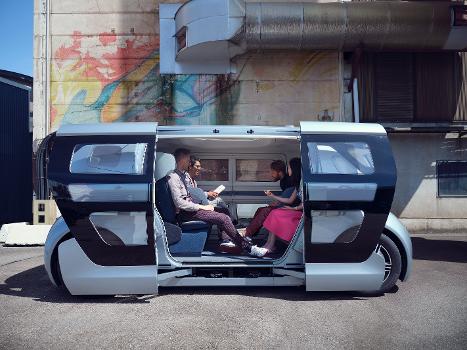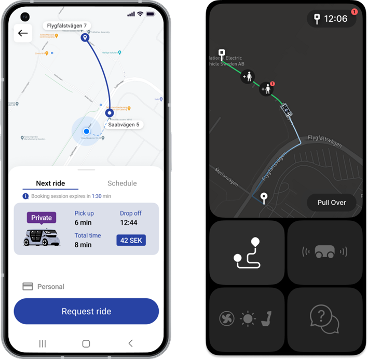



Demand-driven mobility services with self-driving vehicles developed for shared rides are complex solutions. There are multiple systems and components that need to work together to create a seamless customer experience throughout the journey. Everything from the mobile app, the vehicle's layout and design, the service orchestration system and the systems that facilitate efficient operations. Add to that the self-driving technology and what happens to the customer interaction when you don’t have any human presence in the vehicle. At NEVS, we delved into all these issues and created solutions based on a holistic perspective.
(All images below is owned by NEVS)
In our experience, this holistic perspective is of utter importance both when developing the overall service or any sub-system of it. At NEVS, we called the overall service PONS, which was devided in the follwing sub-systems: The vehicle (Sango = Blood cell) that is optimized for shared journeys and maximum accessibility. The back-end system (Koro = Heart) that orchestrates the service and sends the right vehicle on the right mission. The customer interfaces (Okulo = Eye) which are the different interfaces the customer has with the service. The integration (Spinon = Backbone) with other external systems that make the service work in the larger mobility ecosystem.


Although the overall service is a lot more than just a fleet of vehicles, the (purpose-built) vehicle is of course the core component and the main differentiator of the service. In order to reach a high utilization rate and ultimately, to maximize the value the service creates for as many customers and stakeholders as possible, the purpose-built vehicle Sango, that we designed at NEVS was optimized to suit different customers and different purposes at different times of the day. The layout was intended to automatically switch between 4 or 6 seats, with the core configuration being the so called ”privacy mode”. The purpose of privacy mode is, to give the passenger the experience of safety and privacy as in your privately owned car. But while sharing the vehicles with strangers.
The back-end systems main purpose is to orchestrate and optimize transportation using a fleet of autonomous vehicles. The Back-end system / Mobility plattform is mainly split into four integrated domains: Service Orchestration, Vehicle Management, On-site Fleet Operations and User Management. The back-end system needs to provide APIs for apps and other potential customer applications while at the same time controling and monitoring the physical vehicles. In future pilot projects, the back-end system also needs to integrate with the city and its infrastructure.


With the first prototype that we built at NEVS in 2020, we had exceptionally good prerequesites for conducting plenty of in-depth user studies. Based on those studies, we developed an omni-channel strategy where different user interfaces throughout the customer journey had different purposes. A central interface is the mobile app where the customer, among other things, searches, books, pays for the trip and can follow and receive notifications about the trip. Other trip related information and interaction with vehicle functions during a ride was in this concept mainly provided through a private in-vehicle screen.
© Copyright Mobilityservice.se